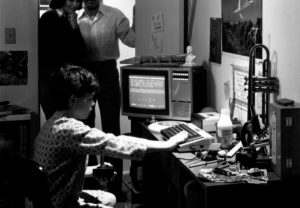Video games Made in Switzerland
These days, you can do courses on game design right here in Switzerland. Before the turn of the millennium, however, Swiss game developers led a shadowy existence. But individual productions from our country still created a buzz.
News item on ‘Mundaun’. SRF
‘Traps ‘n’ Treasures’ gameplay. MsStandart / YouTube
‘Lara Croft GO’ trailer Tomb Raider / YouTube
The most successful Swiss video game: Farming Simulator. Farming Simulator / YouTube



